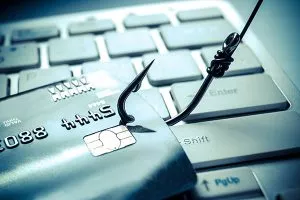You know those pesky spam emails that manage to get through filters? Some of them may seem quite normal, just from a random sender. Some tell users to click a link to enter contests or download a necessary security update. However, if these emails usually seem a bit fishy, it’s because they are.  Phishing emails are one of the most common and well-known forms of cyberattacks. Even though the majority of tech users are aware of them, far too many people manage to get themselves into a heck of a lot of computer and mobile trouble caused by these emails. According to Barkly, 76% of businesses surveyed say they experienced a phishing attack in 2017. By the end of 2017, the average user was receiving about 16 malicious emails per month.
These days, the more common phishing attacks are slipping through the cracks. That’s only because some IT professionals aren’t making their staff aware of them. These are just a few of the most common phishing attacks we saw throughout 2018:
Phishing emails are one of the most common and well-known forms of cyberattacks. Even though the majority of tech users are aware of them, far too many people manage to get themselves into a heck of a lot of computer and mobile trouble caused by these emails. According to Barkly, 76% of businesses surveyed say they experienced a phishing attack in 2017. By the end of 2017, the average user was receiving about 16 malicious emails per month.
These days, the more common phishing attacks are slipping through the cracks. That’s only because some IT professionals aren’t making their staff aware of them. These are just a few of the most common phishing attacks we saw throughout 2018:  In the months before the EU’s General Data Protection Regulation, hackers were phishing like crazy. They posed as tech giants like Airbnb and delivered emails warning users they wouldn’t be able to access the service if they didn’t change their privacy settings. Users would then log in to a replica website, and their credentials would be stolen by the hackers.
In the months before the EU’s General Data Protection Regulation, hackers were phishing like crazy. They posed as tech giants like Airbnb and delivered emails warning users they wouldn’t be able to access the service if they didn’t change their privacy settings. Users would then log in to a replica website, and their credentials would be stolen by the hackers.

SMiShing
GDPR-related Emails

Tax Professional Scams
You May Also Like
- Uncategorized
5 Steps to Building an Effective Ransomware-Free Data Protection Strategy
July 5th, 2021 - Business Continuity Uncategorized
Arcserve & StorageCraft: The New Business Continuity Leader
February 24th, 2021